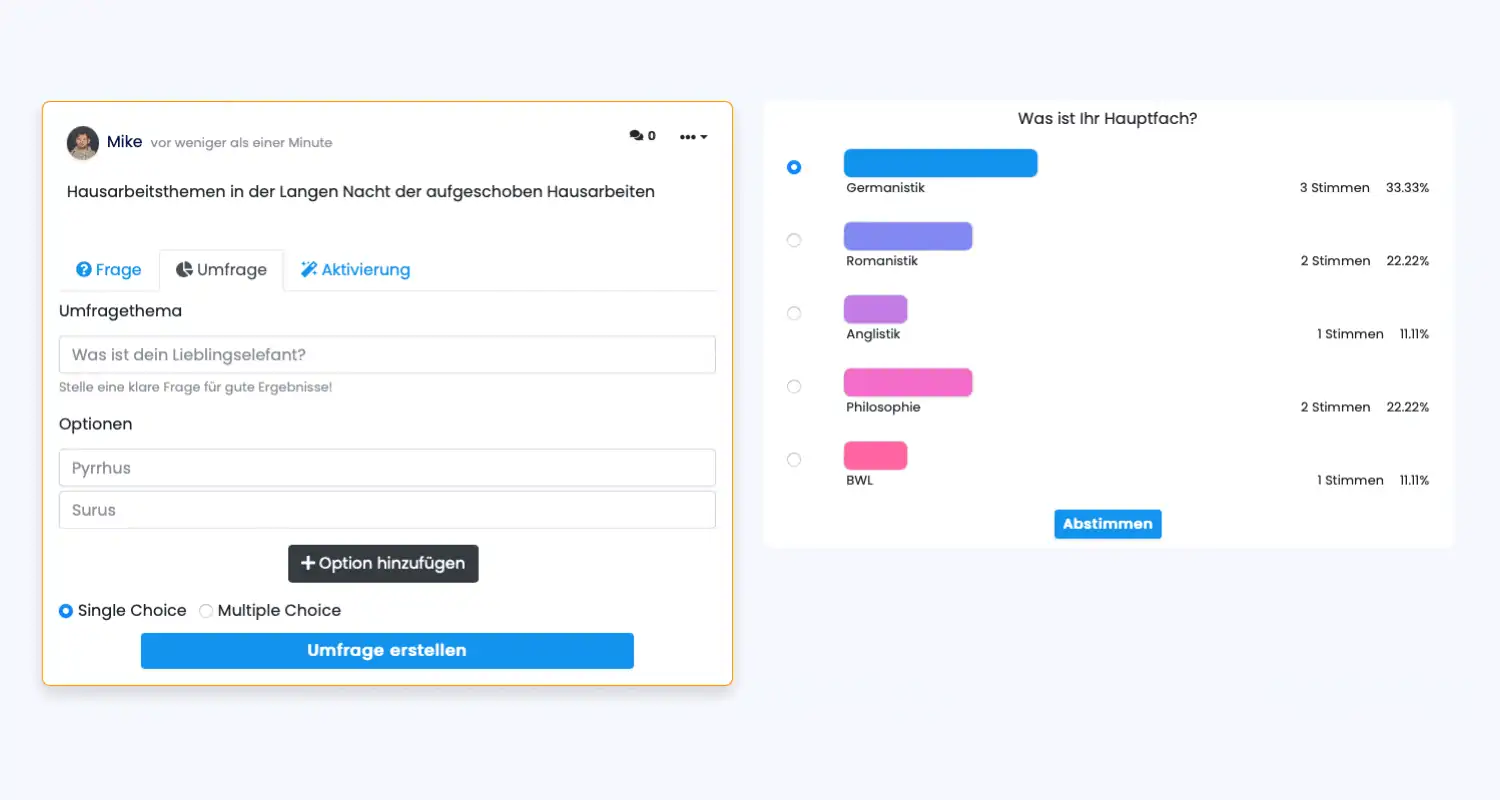Audience Engagement – Craft an active live audience online. [Five tools for your event]
By Alexander Schneider
Keeping the attention of an audience is pretty hard. Keeping the attention of an online audience is almost impossible when you do not make a conscious effort. And many people still struggle with audience engagement.
Good thing there are several trusty tools that you can put in your Awesome-Audience-Toolbox!
In the next few minutes, you will learn about five ways to make your live audience pay attention. It does not matter whether you’re presenting in a workshop, a seminar, or during a talk. The tools work!
Of course, some audiences react better to a tool than others. So it’s better to prepare two or more. Let’s get right into it:
1. Q&A — Opportunity for curiosity
 Allowing questions not only activates your audience, you also learn which parts need to be elaborated on some more. © Unsplash.com
Allowing questions not only activates your audience, you also learn which parts need to be elaborated on some more. © Unsplash.com
If you think about it, what is the common goal of everyone in your audience?
They want to learn something new. Otherwise, the people would not be sitting there! If you think this through, this must mean that they will have questions!
Allow some space for those questions. The benefits are threefold:
- More activity in the audience
- A better understanding of the topic
- You as a speaker learn what is unclear in your presentation
Especially the last point is a nice bonus that improves your future events.
Consider allowing anonymous questions to raise participation rates. Not everybody is comfortable asking questions publicly.
2. Polls — Collect opinions
 You can start polls with schnaq. Whether single or multiple choice does not matter if you want to get your audience to participate. The most important part is an interesting poll question.
You can start polls with schnaq. Whether single or multiple choice does not matter if you want to get your audience to participate. The most important part is an interesting poll question.
An easier way to let people voice their opinion is to use polls.
It’s no rocket science. But still very effective for activating the audience.
Ask a question and give multiple options to answer it. Then let your audience make their choice.
You can use the results as a basis for a short discussion or comment. Make the question you ask fitting to the topic at hand. And try to make the polls either fun or a little bit controversial for maximum effect. Meaning you should not just ask for their favorite color. Although, this might work in some scenarios as well.
3. Brainstorming — Hear every voice
Holding an ad-hoc brainstorming has similar effects as a Q&A session. With the difference that the audience gains a sense of ownership and participation. Brainstorming works best if you just taught the audience something new or are about to. Present a challenge or problem relating to the new material. Now let the audience make (anonymous) suggestions on overcoming the challenge.
Brainstorming works even better if there is a visualization of the process. Mind maps or word clouds work best for this.
4. Gamification — Lighthearted fun
 Games can lead to your audience being very engaged with your event. Especially if there is a competitive element, like in small trivia games.
Games can lead to your audience being very engaged with your event. Especially if there is a competitive element, like in small trivia games.
Gamification in this context means doing something fun with your audience. It might not work for any audience. But you would be surprised how often it does.
The best time for a small game sequence would be before or after a pause. A few suggestions for you to try out would be:
- Icebreakers: Ask a few personal questions and collect them in a word cloud or with (virtual) sticky notes
- Challenges: Divide the audience into groups and give them something to do. For example, counting the mentions of a word.
- Play a small trivia game. Everything goes as long as you achieve your goal of keeping the audience engaged.
5. “Choose a Path” — Let the audience decide
Do you know those “choose your own adventure” books? Do that but with your event. Hear me out:
You do not have to go off script for the whole talk or workshop. Just build in a few parts where you have two alternatives prepared.
 Just like those tracks, the paths where you diverge can merge again afterwards. This way, you do not need to prepare countless different events
Just like those tracks, the paths where you diverge can merge again afterwards. This way, you do not need to prepare countless different events
When you arrive at those points, ask your audience which alternative they prefer. Then resume with your workshop. Imagine your talk structure like train tracks that split and then come together again. Do not bother with lengthy polls for that. Just use any quick signal. Raising hands or pushing a virtual button is just fine.
Do you want to have software that helps you with all online, hybrid, and offline audience activation? Try out schnaq now!